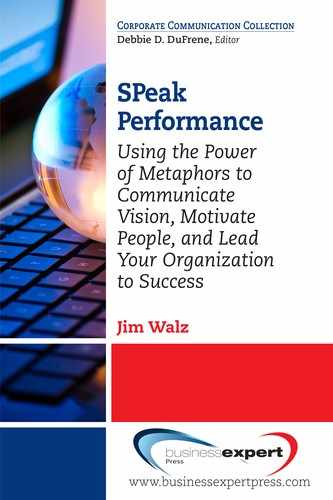Ligering: Combining and Creating New Metaphors
The World is a Vampire.
—Smashing Pumpkins, “Bullet with Butterfly Wings”
Sometimes one metaphor is incapable of adequately providing all the elements needed to be effective. In this instance you can consider combining two metaphors. One of the funniest combinations that I had ever heard came from the movie, Napoleon Dynamite. Napoleon, a clumsy, nerdy, high school student, is quite an artist (snicker), and in one scene he is sitting on the steps of his high school sketching something. His girlfriend steps out of the doors of the school and takes a couple of steps down and sits behind and to the right of Napoleon. She asks him what he is drawing? He responds, “A liger, pretty much my favorite animal. It’s like a lion and tiger mixed, bred for its skills and magic.” I’m not sure how he determined the attributes but clearly, he was convinced of the liger’s ability to live up to them.
This is a great illustration of combining metaphors to come up with something that captures the attributes of two vehicles. In this case the lion and the tiger. It could have been a lion and a baboon, called a “liboon,” or a “babion.” It could be an animal that is very strong and majestic as well as nimble and steals like a thief. I don’t know in what case you would apply the metaphor of a liboon but you can see that combining metaphors or, “ligering” as I call it, is not a difficult thing to do.
Ligered metaphors don’t need to be from similar categories. In the illustration I took two animals and combined them into a metaphor, a liboon. But what about ligering animate and inanimate objects? What if you were to combine an elephant and a tank for example? You would come up with a metaphor that had the following attributes: (1) powerful, (2) protective, (3) able to move through any terrain, (4) tough skinned, (5) able to block opposition, (6) obedient, (7) impervious to pain, and (8) able to work long hours. You could call this an “elephank.” I don’t know about you, but I’d love to hire someone like this.
Another way that metaphors can be used in the creative process is when you combine them to come up with something new or unique. What about combining a robot and a human arm? Robotic Arm. Hmm, seems like someone has already come up with that. Combining or innovating in this way can help you create new products and technologies.
Humans have a natural tendency to want to combine their human attributes with inanimate objects. A case in point is the talking car from the 1982 hit television series, Night-Rider, starring David Hasselhoff as Michael Knight. We see other examples of this in films like the Terminator series. Still another example is the combination of the computer and television to produce the smartphone. We can go on and on with examples of how metaphors have been used to create real or fictional things with unique attributes. However, it is important to make sure that you test your metaphor so that it reflects the attributes you desire, and that others see the reflection accurately as well.
Metaphor Construction
Just as in building construction, you need to use sound methods to construct metaphors. Unless your foundation is strong, the entire metaphor is weak and will eventually fail to produce the power you need to move your organization forward. Consider if your home were built with cement blocks on a foundation of toothpicks. Eventually, and very quickly, the foundation would collapse.
Choosing the right attributes that you hope the metaphor will project is the first step that takes place in the metaframing stage. As you decide on the attributes you want to project, you create categories of things that exemplify those attributes. After you create lists within these categories, you begin to look for things that are the best fit and have the most direct structural relationship with the target.
In the story, the target was the record company and is the thing that gains added value from the vehicle, or the tennis ball. The metaphor would be something like, “The company (target) is a tennis ball (vehicle).” The vehicle points back to the target those qualities that exemplify the attributes the target wishes to project. Hence, the attributes of the tennis ball point back to the company, and the company gains the added value of these attributes. The attributes are now attributable to the company. The company owns the attributes and begins to project them. These are the first steps in ensuring that sound reconstruction methods are being employed.
In most metaforming exercises, the target is looking for a vehicle that can produce action. The metaphor, “The Volkswagen is a jar of honey,” would not gain any action or activity from the use of a jar of honey as the vehicle. However, if the metaphor were something like, “The Volkswagen is an F-16 fighter jet,” it would definitely project back to the Volkswagen the attribute of speed. You can picture the Volkswagen flying along at supersonic speed. This is what I earlier called, “picturesquing.”
When combining targets and metaphors to create new metaphors it can be helpful to combine the vehicle and target words to create new words. I illustrated this in the example of the liger and the elephank. This creates simplicity that others can easily see and understand the combined attributes that you are trying to project. This, as you’ll remember is called “snapshooting.”
Questions to Consider
1.What metaphor adequately describes your current or past organization?
2.What is the target and vehicle of this metaphor?
3.What new metaphor describes what you would like this organization to become?
